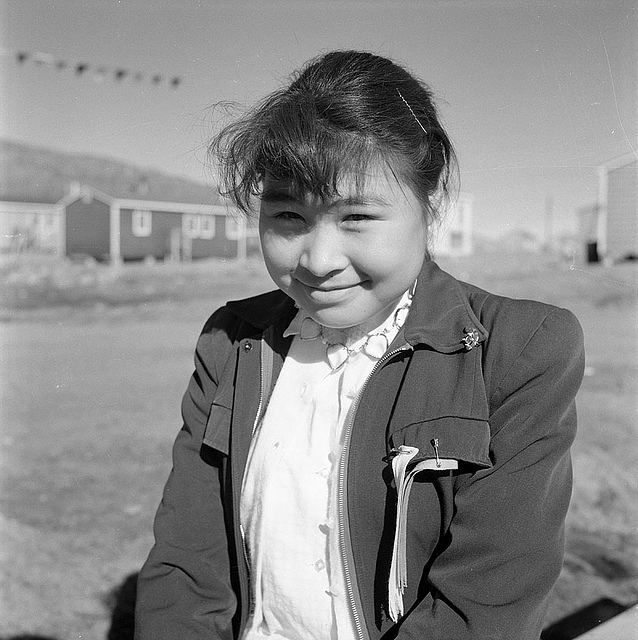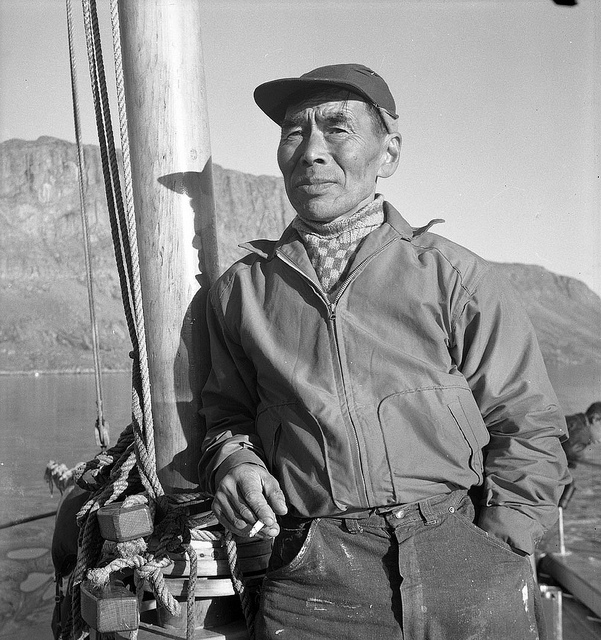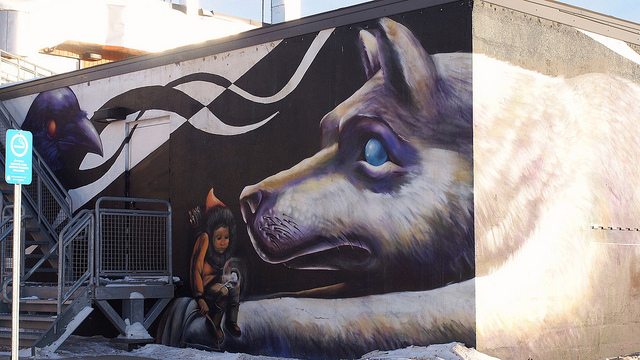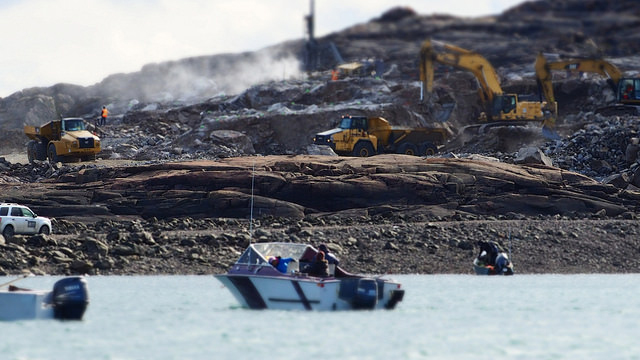The Nunavut territory was formally created by the government of Canada for the Inuit of the eastern Arctic nearly 20 years ago. Anticipating the upcoming 20th anniversary, Maclean’s, a popular Canadian news magazine, recently published a critical analysis of the failures and accomplishments of the new territory for fulfilling the needs—and the dreams—of the Inuit people.

The story of the new territory has included many failures, as the article points out in detail, but probably the most important aspect of the entire drama has been its peacefulness. Aluki Kotierk, the President of Nunavut Tunngavik Inc (NTI), tells Maclean’s, “It was Inuit who changed the map of Canada, all in a peaceful manner. When you look at how maps are changed around the world, it often involves war or civil strife. Yet we were able to do that within Canada with no war.”
The story of Nunavut began nearly a decade earlier when Inuit leaders and federal government representatives, after months of tense negotiations, finally came to an agreement around a conference table in Ottawa. The government would agree to the creation of a new territory for the eastern Arctic Inuit. A couple years after that, in 1993, a Nunavut Land Claims Agreement was given royal approval. It recognized the land rights of the Inuit, granted them political control of their lives, and established a plan for forming the new government of the territory. It came into existence formally on April 1, 1999.
But after 20 years of disappointments, Ms. Kotierk and NTI are wondering if there might be a better way for the Inuit to move forward. “If the territorial public government isn’t meeting the needs of Inuit, is there another way in which we can do that?” she asks. Can they devise a better model for Inuit self-government, especially since the government of the territory does not seem able to meet their needs?

Criticisms of the Nunavut government are based on failures in dealing with three critical issues: employment, language, and education. The basic agreement between the Inuit and the federal government stipulated that the new territorial government would be staffed by a majority of Inuit employees. Ms. Kotierk maintains, however, that Inuit staffers and outsiders remain, after all these years, at a 50/50 balance. If the agreement they had signed were to be fairly implemented, the Inuit “would be in control and in a position to influence how programs and services would develop for Inuit.”
The use of Inuktitut, the language of the Inuit, has been declining over the past 20 years. Kotierk blames the schools for not providing educational materials and instruction in the language of the people. Each census shows fewer people in Nunavut using Inuktitut in their homes. Few teachers in the schools in Nunavut speak Inuktitut and last year the Nunavut government proposed a bill that would have further delayed effective instruction in the native language until 2030. Is the territorial government really committed to the preservation of Inuit culture?

NTI has challenged the government for its failures. In December 2006 it filed a lawsuit seeking $1 billion in damages from the government of Canada for what the group claimed was a breach of contract. NTI argued that Ottawa was keeping the Inuit in a state of dependence and despair. But in May of 2015 the group accepted an out-of-court settlement that provided $50 million for job training for the Inuit. But Kotierk tells Maclean’s that the government has still not created an employment plan.
The 1993 land claims agreement, according to the news story, gave the Inuit title to 18 percent of the land in the new territory—350,000 sq. km.—plus two percent of the mineral rights. It also provided for $1.173 billion over a period of 14 years, plus of course the creation of the new territory. The Inuit were supposed to gain employment in mining, oil, and gas developments. Their rights to hunt, trap, and fish were guaranteed.
While some aspects of the agreement have in fact been realized, the Inuit are increasingly becoming discouraged with what is happening to their society. Social trends are going down. The infant mortality rate in Nunavut is the highest in Canada—17.7 per 1,000 live births, far higher than the rest of the country which averages 4.7. The territorial population is growing much faster than the rest of the nation: it is up 40 percent since 1999. Other problems plague the territory: suicides, family violence, and crimes have grown above the national average. Substance abuse and alcoholism are widespread.

Maclean’s doesn’t paint an entirely bleak picture of Nunavut. The government has finally embarked on the construction of a deep-sea port for the capital city, Iqaluit. A large, $300 million Iqaluit airport terminal was finally opened in 2017. And Inuit arts are flourishing. Around 3,000 artists are earning at least some income from the sales of their creations, some of which are internationally recognized.
Inuit leaders such as Kotierk are not certain how or if a self-governing option could work, and it is not certain whether the people would support more self-government. But it is clear from the article that the Inuit are discouraged that they have not made more progress in the last two decades. Whatever happens, it appears as if they will negotiate their changes peacefully.